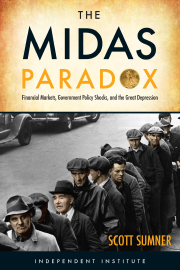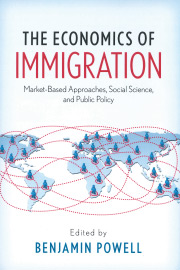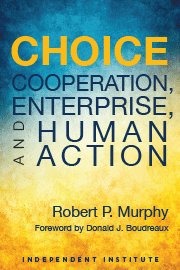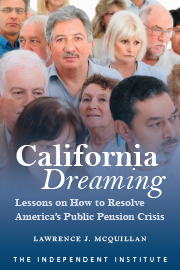Craig Eyermann • Monday, October 8, 2018 •
Last December, something remarkable happened in Sri Lanka. The nation ceded control of its Hambantota Port, which its government had been working to develop for over seven years, to China, which now holds a 99-year lease on the strategically located facility in the Indian Ocean. The New York Times reports:
Every time Sri Lanka’s president, Mahinda Rajapaksa, turned to his Chinese allies for loans and assistance with an ambitious port project, the answer was yes.
Yes, though feasibility studies said the port wouldn’t work. Yes, though other frequent lenders like India had refused. Yes, though Sri Lanka’s debt was ballooning rapidly under Mr. Rajapaksa….
Mr. Rajapaksa was voted out of office in 2015, but Sri Lanka’s new government struggled to make payments on the debt he had taken on. Under heavy pressure and after months of negotiations with the Chinese, the government handed over the port and 15,000 acres of land around it for 99 years in December.
The transfer gave China control of territory just a few hundred miles off the shores of a rival, India, and a strategic foothold along a critical commercial and military waterway.
The case is one of the most vivid examples of China’s ambitious use of loans and aid to gain influence around the world—qqqand of its willingness to play hardball to collect.
Robert Higgs • Wednesday, October 3, 2018 •
Public choice theory, a subfield of economics developed extensively over the past sixty years, has sought—in the words of its foremost developer, James Buchanan—to take the romance out of the study of politics and government action.
For a long time, a public-interest theory had held sway among scholars and students of political science. In this perspective, people in the general public respond to ordinary economic incentives and seek ordinary, personal economic goals. Thus, for example, consumers seek to maximize their consumer satisfaction, or “utility,” from the consumption of normal goods and services, and they are constrained by their incomes and by the prices of goods on the market. Producers seek to maximize their wealth—the market valuation of their firms—and they are constrained by technology, the costs of inputs, and the competition of other sellers. And so forth for other private economic actors. But once a person leaves the private sector and takes up a position in the government, he is transformed from a utility or wealth maximizer into a public-spirited actor who seeks to do whatever serves the general public interest best. This idea is so prima facie preposterous and counterfactual that one wonders how anyone ever embraced it sincerely, but many people, even scholars, seem to have done so—indeed, many still appear to do so today.
Craig Eyermann • Wednesday, October 3, 2018 •
The end of the U.S. government’s 2018 fiscal year on September 30, 2018, was accompanied by a grim milestone for the U.S. national debt: the return of trillion dollar deficits.
As of September 28, 2018, the last business day of the fiscal year, the total public debt outstanding of the U.S. government stood at $21.516 trillion, an increase of $1.271 trillion over the level of $20.245 trillion, where it stood on September 29, 2017, the last business day of the government’s 2017 fiscal year.
Terence P. Jeffrey, who covers the national debt beat for CNSNews, puts the latest single-year trillion dollar increase in the national debt into perspective:
George Ayittey • Monday, October 1, 2018 •
First Lady Melania Trump leaves today on the four-nation trip to Africa—the first international trip alone without her husband. She will visit Ghana, Malawi, Kenya, and Egypt. Although she carries her own slogan, “Be Best,” she will be working closely with the United States Agency for International Development (USAID). At a reception at the U.S. Mission to the United Nations, she commended the agency’s work in Ghana to improve health care and nutrition. In Malawi, USAID has championed education as a means of fighting poverty, and in Kenya, its programs focus on early education, wildlife conservation, and HIV prevention.
There is a lot riding on her trip, not least of which is foreign aid. Africa’s economies—in particular, Nigeria and South Africa, the two largest—have been struggling with recession. In an August trip to Africa, Britain’s Prime Minister Theresa May pledged $5.1 billion for investment in Africa. A month later at a forum in Beijing, China made a counteroffer of $60 billion in aid and loans without any political conditions or strings attached. Speaking at the Beijing forum, Chinese President Xi Jinping disclosed the breakdown of the aid as follows: $15 billion in grants, interest-free loans and concessional loans, $20 billion in credit lines, $10 billion for “development financing” and $5 billion to buy imports from Africa. While many African leaders would expect her to commit U.S. funding, Melania Trump should avoid making any pledges of foreign aid.
There is much confusion about foreign aid, of which there are three types—humanitarian assistance, military aid, and official development assistance or ODA. Humanitarian assistance is offered to victims of natural calamities such as earthquakes, flooding, hurricanes, and so forth. Such aid is welcome and noble when an African country is struck by a natural disaster. Military aid to Africa has been the most useless and pernicious. More often than not, it has strengthened the hands of dictators against their own people. For example, in February 2011, during heydays of the Arab Spring in Egypt, the Hosni Mubarak government sent U.S.-supplied F-16 fighter jets to buzz protesters in an effort to intimidate and terrorize them. It did not work; Mubarak was ousted by the Supreme Council of the Armed Forces of Egypt led by Abdel al-Sisi, who rapidly promoted himself to field marshal, and subsequently became the president. The Egyptian military controls about half of the country’s economy.
K. Lloyd Billingsley • Sunday, September 30, 2018 •
The California Public Employees Retirement System (CalPERS) is the largest state pension fund in the United States. As we recently noted, CalPERS hired as chief executive officer Marcie Frost, even though she lacked a college degree of any kind. It was as though the state Supreme Court tapped for chief justice a paralegal who had never been to law school. The revelation about Frost sparked criticism around Sacramento, but CalPERS bosses weren’t listening.
On September 25, CalPERS awarded Frost a raise of 4 percent and a bonus of $84,873 on top of her base pay of $330,720. Previous CEO Anne Stausboll topped out at $322,400 and bagged bonuses of $86,587 in 2010 to $131,044 in 2015. Taxpayers might wonder about bonuses for either boss. CalPERS unfunded liabilities have increased 383 percent in ten years, and the massive state pension fund is some $100 billion short of funding its pension obligations. The unqualified Frost does enjoy the support of government employee unions, whose role at CalPERS is to protect incompetence.
A former CalPERS manager known to this writer passed up a football scholarship to a Big 10 college in order to earn graduate degrees in business administration. He worked in the technology industry and CalPERS was his first experience in a government agency. One of his employees was spending hours a day on personal phone calls, which he noted on her performance evaluation. Two union goons promptly appeared in his office claiming that the employee needed more training. The fully qualified manager soon departed for a job where accountability, not incompetence is rewarded.
Meanwhile, taxpayers might expect the state director of finance to be a proven economist with a PhD. Governor Arnold Schwarzenegger’s pick was Ana Matosantos, with only a BA in political science and feminist studies, a non-discipline. Jerry Brown kept Matosantos on the job, and Covered California, the state’s wholly owned subsidiary of Obamacare, hired her for $20,000 a month.
***
K. Lloyd Billingsley is a Policy Fellow at the Independent Institute and a columnist at The Daily Caller.
Craig Eyermann • Saturday, September 29, 2018 •
Every September, U.S. government bureaucrats go on a spending spree to burn through all of the money that they’ve been approved to spend by Congress before the federal government’s fiscal year ends at the end of the month.
2018 is no different, except for the magnitude of this year’s federal spend-a-thon, where the bipartisan budget deal signed by President Trump in February authorized a lot more spending than would have happened without the deal.
Given that kind of license to spend, a lot of bureaucrats are now making a lot of really questionable purchases using your tax dollars and money they’ve had to borrow just to spend as much as they’re now allowed to spend. Elizabeth Harrington of the Washington Free Beacon reports on some of the more wasteful ways that Washington D.C.’s bureaucrats spent money before the clock on the 2017 fiscal year ran out last September.
Federal agencies spent millions on cars, scooters, fidget spinners, and shuffleboards in an attempt to exhaust their budgets before they run out at the end of the fiscal year.
An analysis of federal spending by OpenTheBooks.com and shared with the Washington Free Beacon reveals 67 agencies and departments spend nearly $50 billion closing out their fiscal year 2017 budgets.
The “spending frenzy” totaled nearly $50 billion in seven days.
And that was during the last seven days of September 2017, where federal bureaucrats spent $1 of every $9 that the U.S. Congress had authorized for them to spend in the entire 2017 fiscal year.
In 2018, the numbers are going to be even bigger!
***
Craig Eyermann is a Research Fellow at the Independent Institute and the creator of the Government Cost Calculator at MyGovCost.org.
K. Lloyd Billingsley • Friday, September 28, 2018 •
This month homeowners will get a letter from the county demanding, OPEN IMMEDIATELY: PROPERTY TAX BILL, or something like that. “Let’s have the wallet, Jack,” it says in effect. The tax bill is certain to be higher than the previous year, with no explanation of new or better services. Since in some areas those services are actually declining, there may be a way to reduce the bill.
In cities such as Oakland, police are reducing the number of crimes to which they will respond. And as the Women’s Self-Defense Network notes, the average interaction time between a criminal and his victim is 90 seconds. So “the police will almost always arrive AFTER the crime has happened and the criminal has gone.” Those who prepare to deal with violent criminals before the police arrive, deserve a tax break for doing so. A model for such a deduction is already in place.
Under the federal Public Utility Regulatory Policies Act (PURPA), utilities must buy back any excess electricity home and business owners generate with their private solar energy systems. In similar style, business and home owners should be able to deduct from their property tax the cost of security systems, alarms and even firearms and ammunition. These owners face declining police services and slow response times, even as Propositions 47 and 57 have emboldened criminals. The last true tax break for California property owners was Proposition 13, passed forty years ago in 1978. Californians now pay the nation’s highest income and sales taxes, and relief is long overdue.
Meanwhile, states, counties and cities should also make it easier, not more difficult, for law-abiding residents to keep and bear firearms. As Stephen Halbrook has noted, most recently in Gun Control in Nazi-Occupied France, it is the totalitarian state that squashes the right of citizens to defend themselves.
***
K. Lloyd Billingsley is a Policy Fellow at the Independent Institute and a columnist at The Daily Caller.
K. Lloyd Billingsley • Friday, September 28, 2018 •
On Thursday, September 27, families of victims of double murderer Daniel Marsh will assemble at the California capitol to urge Governor Jerry Brown to veto Senate Bill 1391, an amendment to the Public Safety and Rehabilitation Act of 2016, also known as Proposition 57. That measure barred the prosecution of juveniles as adults, whatever the gravity of their crime. The measure applied to criminals aged 16 and 17, which SB 1391 lowers to ages 14 and 15. If this measure becomes law, anyone of that age could commit murder and serve only until age 25.
In 2013, Marsh was only 15 when he murdered an elderly couple in their Davis home. Marsh tortured and eviscerated both victims and left a cell phone and drinking glass inside the bodies to confuse the police. Committing the crime at age 15 was part of his calculation to avoid the maximum penalty. He was tried as an adult and in December, 2014, and sentenced to 52 years to life, with the possibility of parole after 25 years when he would only be in his early 40s.
Two years later, in 2016, Prop 57 passed, but this year an appeal court applied it retroactively to Marsh and reversed his conviction pending a “transfer hearing.” In effect, this hearing a new trial, with no new exculpatory evidence, all for a convicted murderer who has never shown the slightest remorse and clearly poses danger to the public. If Marsh is judged suitable for juvenile court, he would be re-sentenced as a juvenile and face maximum punishment of incarceration until age 25. If outgoing governor Jerry Brown signs SB 1391, that will surely emerge in the “transfer hearing,” for Marsh, which starts October 1 in Yolo County. Call it the injustice inherent in the system.
Meanwhile families of those killed by juvenile murderers are also rallying in Colusa County with banners reading “Colusa County Stands For Victim Rights.”
***
K. Lloyd Billingsley is a Policy Fellow at the Independent Institute and a columnist at The Daily Caller.
Randall Holcombe • Thursday, September 27, 2018 •
A local news story in my area, Tallahassee, Florida, reports that a sheriff’s deputy has been stopping motorists and planting drugs in their cars for at least two years, leading to hundreds of convictions. The story reports that 263 cases in which the deputy “found” drugs in cars are being reviewed and that 48 cases have already been dropped.
While a new story here, the problem of police planting drugs on people, leading to their arrest for drug possession, has been reported in Baltimore, Los Angeles, and other places (see here and here for other examples).
The war on drugs is misnamed. Drugs are an inanimate object. It is really a war against people. At one point I characterized it as a war against people who buy, sell, or use drugs, but these examples show I was too narrow in identifying the targets of the war on drugs. People who have nothing to do with drugs can become victims as police frame them for “crimes” they did not commit.
All victimless crimes are an attack on liberty. Government is violating people’s rights, not protecting them when activities that do no harm to third parties are criminalized. But criminalizing drug possession has another negative aspect: No other people are involved, so there are no other people who are in a good position to speak up for the accused.
Raymond March • Wednesday, September 26, 2018 •
Last February, the Food and Drug Administration released guidance indicating it intends to require honey and maple syrup (as well as some cranberry) products to include “sugar added” labels with their nutritional content information. Concerned that “consumers would not be able to understand the relative significance of these sources of added sugars,” the FDA hopes new sugar added labels will help consumers make healthier choices. As FDA Commissioner Scott Gottlieb remarked, “We’ve made it our goal to increase consumer awareness of the quantity of added sugars in food products consistent with recent dietary guideline recommendations.”
These new labels follow guidelines established by the 2015-2020 Dietary Guidelines for Americans which “Defines ‘added sugars,’ in part, to include sugars that are either added during the processing of foods, or are packaged as such. The term includes…sugars from syrups and honey [italics mine].”
If you find the idea of requiring syrups and honey to have “sugar added” labels for containing sugars from syrups and honey confusing or misleading, you are in good company.























